
Fun fact for you…
Did you know that you can use hypnosis for allergies? That in fact, hypnosis is actually is a highly-effective way to relieve discomfort and allergic reactions?
Scratching your head wondering how? Yeah, we get it. It does seem surprising that if someone is allergic to say peanuts, latex or even to a certain medication – that hypnosis could help.
… but it does.
And in just a moment, you’ll discover exactly how hypnosis relieves allergies, as well as a few hypnosis techniques that hit the cause of allergies on the head.
But before you start working with clients who are suffering from allergies, it’s important that you understand what allergies actually are, as well as what causes them in the first place.
So let’s get started, shall we?
What Are Allergies: Causes, Symptoms & Common Treatment
What is an allergy?
An allergy is the way a person’s body responds to a food or substance when it thinks its immune system is under attack.
It’s often described as an abnormal reaction to an ordinarily harmless substance.
If your hypnosis client suffers from an allergy, that means their body is hypersensitive to something called an allergen.
When exposed to the allergen, such as pollen or dust mites, their immune system believes it is being threatened and so it goes into action to defend itself.
It produces antibodies and releases chemicals called histamines, which usually result in symptoms such as:
- Sneezing
- Itching
- Runny nose or stuffy nose
- Hives
- Swelling
Some of the most common symptoms caused by food allergies include vomiting, diarrhea and breathing difficulties.
Allergic reactions are normally treated in the medical field with antihistamines (to counteract the histamines) and steroids (to reduce swelling and redness).
It’s also common for health professionals to use systematic desensitization in an attempt to cure a specific allergy.
This is a process whereby small amounts of the allergen (such as peanuts, for example) are given to the patient over time, so that their body gradually becomes desensitized to it.
It’s a slow process that takes a long time and that has only proven successful with certain types of allergies.
The other thing you need to remember about allergies is that they’re a medical condition.
Before you start working with a client who suffers from an allergy, make sure that they have been referred to you by a medical professional.
It might even be necessary for you to have a nurse or medical team on standby just in case anything goes wrong.
Facts & Figures: So, Just How Common Are Allergies, Anyway?

According to the WebMD site, the most common allergies are to pollen, dust mites, mold, animal dander, insect stings, latex, and some foods and medications.
Allergies to certain foods account for a large portion of that, with as many as 15 million Americans believed to have food allergies.
More than 170 foods are known to cause allergic reactions. The most common food allergens include milk, egg, peanuts, tree nuts, wheat, soy, fish and crustacean shellfish.
Allergies are more common in children than in adults, and many children grow out of them. Some allergies continue throughout life, and adults can also develop allergies.
In the UK, it’s estimated by the National Health Service (NHS) that 1 in 4 people are affected by allergies in one form or another. And in Europe, allergies are the most common chronic disease, with as many as 150 million Europeans thought to be suffering from them.
Hypnotic Tools & Techniques To Relieve Discomfort Caused By Allergies
As far as using hypnosis is concerned, allergies are quite similar to phobias. In the hypnosis world, we’ve seen that allergies are similar to phobias in that they may be a learned behavior, often associated with some kind of trauma, real or perceived.
For example, there was a man who came for hypnosis because he had a particularly severe cat allergy. His allergy was so bad that he couldn’t even enter a room where a cat had been!
It turned out that when he was a child of 9 or 10, he was asked to look after a neighbor’s cat while they were away. Upon entering the dark house one night to feed the cat, the cat immediately pounced on him from atop a high shelf… completely terrifying him. And ever since that traumatic event, he’s had a violent allergic to cats.
Once the original event was hypnotically regressed and brought to conscious awareness and dissolved, his allergy completely disappeared.
So much so, he even went the next day to a pet shelter and played with over 20 cats without so much as a sniffle or itch.
Something that was impossible for him a day earlier, before hypnosis.
As well as hypnotic regression, where you dissolve the original trauma that caused the allergy, two phobia-related approaches that you can use to desensitize allergies, are:
• The Counterexample
The idea is to get your client to recall an experience when they encountered the fear stimulus (for phobias) but didn’t feel the negative emotion.
For allergies, they would need to recall a time when they experienced the allergen (pollen, peanuts, cats, dogs etc.) and didn’t have a reaction to it.
For example, a child who observes their mother’s reaction to a bee sting can develop an allergy based on this experience.
So if a child observes their mother getting hysterical when a bee hovers around their hands before stinging them, the child can develop an allergy to bees all of their lives based on this experience.
It’s the theatrics that cause the allergy – the yelling, the fear, the waving of the arms – more so than the sting itself.
This is because they’re unconsciously telling their immune system that bee stings are highly dangerous and to mount an immense immune attack if they get stung.
What’s more, if the bee is in a flower garden or tall grass, the child can also associate this parental reaction with flowers or grass and develop hayfever or allergies to flowers or perfumes, thinking that they’re very dangerous as well.
So the counterexample would be to get your client to recall a time before this event when they saw a bee and didn’t experience the negative emotion.
Fascinating stuff, right?
• The Systematic Reset
The idea is to present your client with a small bit of the stimulus rather than the complete thing. For phobias, that might be the picture of a spider rather than a real spider.
When they can deal with the picture of the spider, then perhaps you present them with a video. Then with a spider in a glass case in the next room. Each time you up the ante so that they become more and more desensitized to the thing they fear.
This is exactly how vaccines work. The body gets a small amount of a disease so that the immune system has a chance to work out how to fight it off.
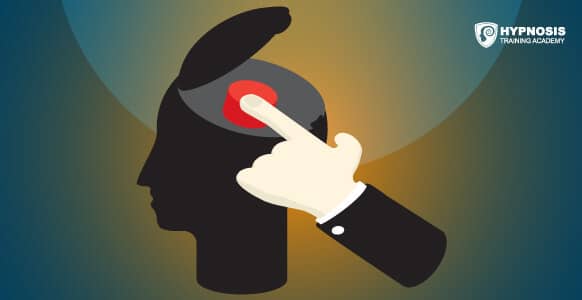
This desensitising technique works well in conjunction with regression therapy – if you can find the original event. It’ll also work without regression, but may take longer to re-educate the unconscious mind to understand that the allergen isn’t actually a physical threat.
The need for medical assistance usually comes when you are testing that the subject has overcome the allergy.
For example, if someone had an allergy to peanuts, after hypnosis you’d test that the allergy is gone by giving them peanuts. Having a medical professional standing by to administer an antihistamine shot if necessary, is a must with severe allergies.
Makes sense, right?
You should also check to make sure that this kind of therapy is legal in your state or country. If you’re in any doubt, the best thing to do is to get advice from a lawyer.
Here are 4 powerful tools that can be used by themselves, or in addition to other techniques to help your clients deal with allergies.
1. The Hypnotic Blitz

This is one of the most flexible hypnotic tools of all. It works by giving your client a future memory in which they have the desired response to an allergen.
That desired response will be calmness, safety, and so on, rather than the fear and anxiety they normally experience.
The blitz allows you to create an environment for your client that’s safe and non-threatening, even when they are confronted by the allergen.
You can actually come up with multiple scenarios in which your client can see themselves being allergy free.
The word “blitz” means to bombard, and that’s what you want to do. Pile on the suggestions that tell them they’re safe, such as:
You can probably see how this is also related to the systematic reset approach mentioned above, desensitizing them by introducing the allergen in tiny amounts to start with and then gradually increasing it psychologically, while they’re in trance.
It’s important when doing the hypnotic blitz to keep reassuring your client that they’re perfectly safe in this future scenario, so that they can experience what it will be like to be free of their allergy without having to worry or get stressed out.
2. Revivification
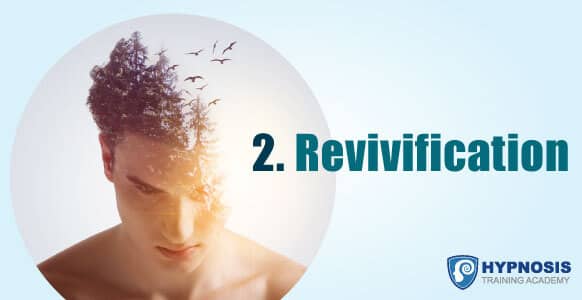
Revivification is a technique in which you take your client back into their past where they can access a resource and use that to deal with any issue. It lets your clients tap into their unconscious mind where these resources are held.
Revivify means to rejuvenate or give new life to. The idea here is to take the client back to a time in their past when they did not have the allergy. This moves them from an attack mindset to a safety mindset.
The concept is to be able to remember an experience clearly and also recall what the experience felt like emotionally. Although they’re experiencing a past event, seeing and feeling it once again, they’re still in the present.
Revivification works like a counterexample – helping your client’s unconscious mind recognize what it feels like not to have an allergic reaction, and also letting it know that not having an allergic reaction is the outcome you intend to achieve.
A simple way of doing this is to take your client back to a time when they didn’t have an allergy. If they’re allergic to latex, for example, perhaps there was a birthday party in the past when they were able to touch balloons and nothing happened.
Get them to remember that time and feel what it felt like to play with the balloons in complete safety and security.
Another way to do a revivification is to use a substance that your client is not allergic to. If they’re not allergic to peanuts, for example, let them remember a time when they ate some peanuts without experiencing an allergic reaction.
These kinds of revivification teach the body how to react when no allergen is present.
3. Regression
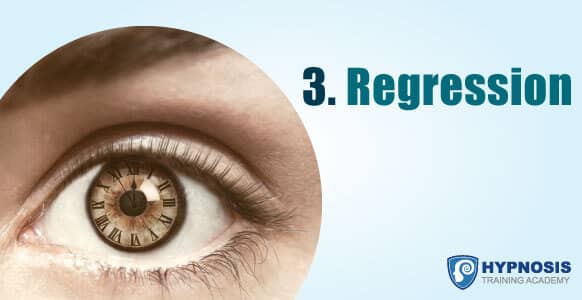
Regression therapy is a type of memory recall that involves taking your client back in time to a point where they can relive the memory and the emotion associated with it. You can think of a regression as a very intense revivification.
However, a regression is different from a revivification. During a regression, your client will regress to the age they were at the time of the memory and experience it as if they were reliving it at that age.
The present will no longer exist for them and they will be able to hear, see, touch, taste and smell everything around them in vivid detail.
When using regression to help a client with allergies, there are 3 important points to remember:
- The safety-to-safety loop – make sure you regress the client to a place or event that’s safe and not deadly. For example, you wouldn’t want to regress an asthma sufferer to a grassy meadow or a flower shop where the air is full of pollen. You want to regress to a time or event before the trauma that caused the allergy, and also set up a time/event after the allergy trauma where they were safe once more. Use a regression protocol where you go from safety, quickly through the trauma, to safety once more. Do this as many times as necessary until the emotion from the event is spent and the subject is calm and can look at the event without trauma.
- The adult-child coaching scenario – the client encounters him or herself as a child, and the child can ask the adult what they need to be safe from the allergen. They could then give the child that resource, such as a magic charm, which could be used to defend them from the allergen. This technique includes an element of dissociation because it’s not the client in their present form but someone else (their younger self) from the past.
- The symbolic forgiveness strategy – this happens at the end of the regression so that your client can forgive him or herself or anyone else they might have blamed for their condition. This is an important step to enable them to move forward with their lives.
4. Dynamic Mental Imagery (DMI)
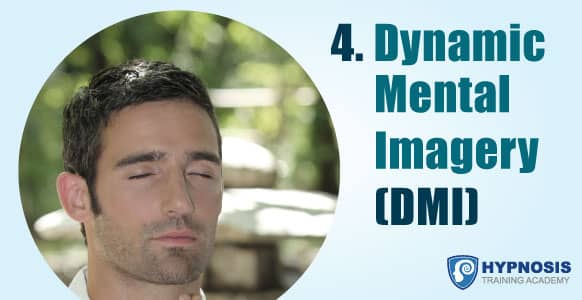
Dynamic Mental Imagery is a form of visualization. Where allergies are concerned, you would use DMI to take your client to some place where they can try out different scenarios in complete safety.
During a typical classic DMI you might send your client to a place of sanctuary, then direct them to another place where they find a symbol that will help them cope with an allergen calmly and efficiently.
There are other ways to use DMI to relieve allergies as well. Here are two of them you might consider:
1. Storytelling – do your gold mining first, which means to find positive resources from their past. And then get your client to tell you about their experience with the allergy, and how they would like it to be different.
Based on what they tell you, you’ll then create a story using their resources, where perhaps they discover some power or resource that would offer them protection against the evil (i.e. the allergen).
Finally you could help them vanquish the demon – the allergy – and emerge heroically. These kinds of stories work well with people of any age. It’s the hero’s journey tale created specifically for them. And who doesn’t like to be a hero in their own story, right?
2. Symbolic Journey – this involves letting your client come up with their own symbol or metaphor that will help them manage their allergy. For example, if they have an allergy to pollen, you might proceed like this:
Hypnotist: What do you want to be able to do?
Client: To get rid of the allergy.
Hypnotist: How will you know when you’re rid of it?
Client: When I can breathe freely and easily.
Hypnotist: How will that make you feel?
Client: I’ll feel good and be able to enjoy the outdoors without worrying.
Hypnotist: When you think about breathing freely and easily, what image comes to mind?
Client: Floating on a cloud up in the sky where the air is clean
NOTE: Your client will pick something that comes into their mind – the above is just an example of what someone might choose.
In this instance, floating on a cloud is the symbol. It doesn’t matter if the air in the sky is actually cleaner than the air down near the ground. What matters is that your client has chosen it for him or herself, so it will have more significance for them.
And our last bit of advice when using hypnosis for allergies… remember to go slowly. Don’t be tempted to strive for the final outcome straightaway. You need to build up to it a bit at a time until your client gradually becomes desensitized to it.
Always work at the pace of your client. If it takes several sessions, that’s perfectly fine. It’s the results that matter, not the speed.



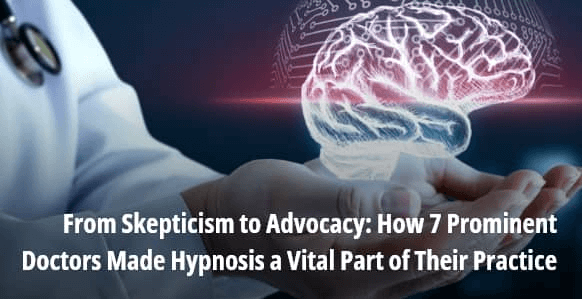

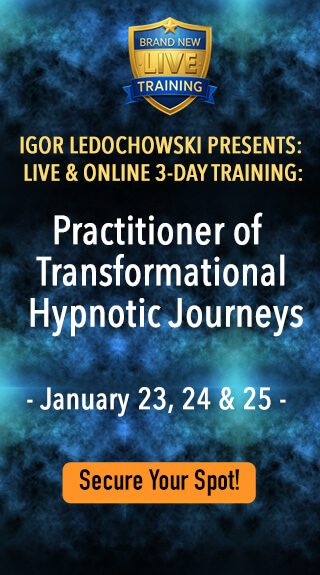


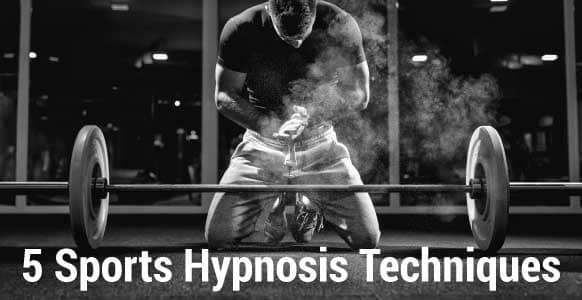


![[ADVANCED GUIDE] How To Master Hypnotic Regression Therapy - Part I: Essential Principles To Profoundly Transform Your Subject’s Emotional Trauma [ADVANCED GUIDE] How To Master Hypnotic Regression Therapy - Part I: Essential Principles To Profoundly Transform Your Subject’s Emotional Trauma](https://hypnosistrainingacademy.com/wp-content/uploads/2016/09/hypnotic-regression-therapy-essential-principles.jpg)


